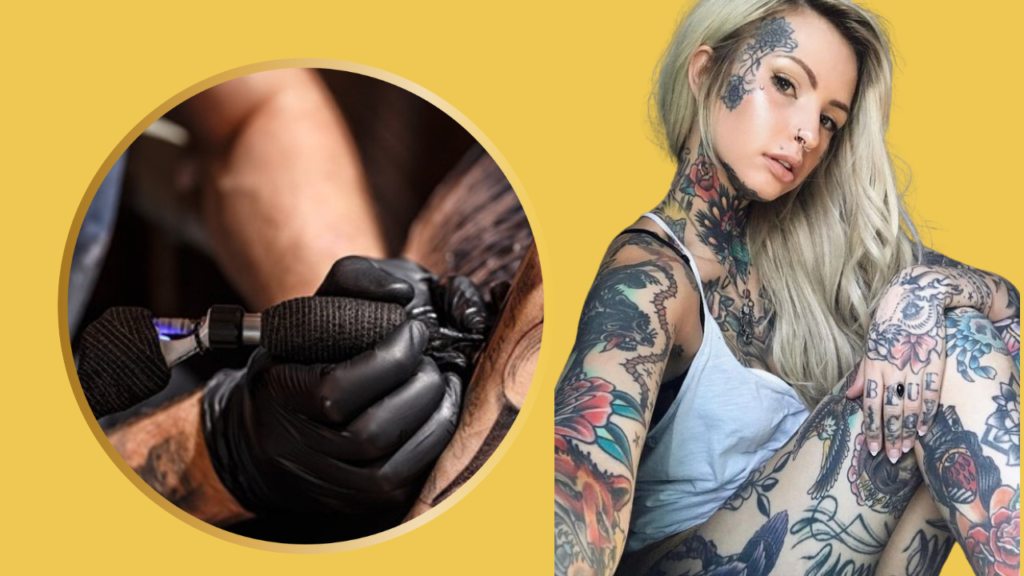Understanding the Tattoo Licensing Process in Australia
Australia is home to a thriving tattoo culture, with talented artists and studios pushing the boundaries of creativity. However, before tattoo artists can practice their craft legally, they must navigate a licensing process designed to ensure safety, hygiene, and professionalism. In this blog, we’ll delve into the steps, requirements, and importance of the tattoo licensing process in Australia.
Whether you’re an aspiring tattoo artist or a studio owner, this guide will walk you through the essential aspects of getting licensed.
Why Licensing Is Essential for Tattoo Artists
Tattooing involves breaking the skin, which carries risks like infections or allergic reactions. The licensing process ensures that tattoo artists adhere to strict health and safety guidelines, protecting both clients and practitioners. Licensing also adds a layer of credibility, making clients feel confident about the quality and professionalism of a tattoo studio.
For more insights on tattoo culture and artistry, check out the Tattoo Blog at Tattoos Down Under.
Tattoo Licensing Regulations in Australia
The licensing requirements for tattoo artists vary by state, but all regulations are designed to ensure public health and safety. Here’s an overview of the regulations across different states:
1. New South Wales (NSW)
In NSW, the tattoo industry is regulated by the Tattoo Parlours Act 2012. Artists and studios must hold a Tattoo Operator License, which is issued by the NSW Police. Applicants undergo a rigorous background check to ensure they meet ethical standards.
2. Queensland
Queensland requires both tattoo artists and studios to be licensed under the Tattoo Industry Act 2013. Artists need a Tattoo Operator’s License, and studios must register with local councils.
3. Victoria
In Victoria, tattoo artists must register with the Department of Health. Artists also need to complete training in infection control to meet licensing requirements.
4. Western Australia, South Australia, Tasmania, and Northern Territory
These states have similar requirements, focusing on infection control training, studio inspections, and background checks.
For a detailed breakdown of state-specific regulations, visit Tattoos Down Under for expert guidance.
Steps to Obtain a Tattoo License in Australia
1. Research Local Requirements
Each state has specific licensing requirements, so start by researching the regulations in your area. Ensure you understand both artist and studio licensing processes.
2. Complete Infection Control Training
A crucial step in the licensing process is completing an infection control course. This training equips artists with the knowledge to maintain hygiene standards and prevent cross-contamination.
3. Submit Your Application
Submit your application to the relevant state authority, along with the necessary documentation. This may include proof of training, identification, and a criminal history check.

4. Studio Inspection
If you’re opening a tattoo studio, you’ll need to pass an inspection. Authorities will check for compliance with hygiene standards, proper equipment, and waste disposal practices.
5. Obtain Insurance
Liability insurance is a must-have for tattoo artists and studios. It protects you from legal claims and demonstrates professionalism.
Challenges Artists Face During Licensing
Lengthy Processes
The licensing process can be time-consuming, especially if background checks or training courses take longer than expected.
Cost Implications
Application fees, training courses, and insurance can add up, making licensing a significant financial investment.
Regulatory Changes
Tattoo laws are subject to change, requiring artists to stay updated on the latest regulations.
Tips for a Smooth Licensing Process
- Start Early: Begin your application process well in advance to account for delays.
- Stay Informed: Regularly check state authority websites for updates on licensing requirements.
- Network with Other Artists: Join local tattoo communities to share insights and experiences about the licensing process.
The Role of Tattoos Down Under in Supporting Artists
At Tattoos Down Under, we’re passionate about helping tattoo artists thrive. Our blog covers everything from tattoo design inspirations to industry tips, ensuring you have the resources you need to succeed.
For more articles on tattoo trends, check out our Tattoo Blog, where we explore everything from celebrity tattoos to cultural symbolism.
Maintaining Compliance Post-Licensing
Getting licensed is just the beginning. To maintain compliance, tattoo artists must:
- Renew licenses as required by their state.
- Follow updated health and safety regulations.
- Keep studio equipment and premises in pristine condition.
Failure to comply with regulations can result in hefty fines or license revocation.
Conclusion
Understanding the tattoo licensing process in Australia is essential for any artist looking to enter the industry. By meeting state-specific requirements and maintaining high standards, you can build a successful and reputable tattoo career.
For more information on tattoo licensing, artistry, and culture, visit Tattoos Down Under—your ultimate resource for all things tattoo-related. Whether you’re seeking inspiration or guidance, our platform is here to support your journey.


Leave a Reply